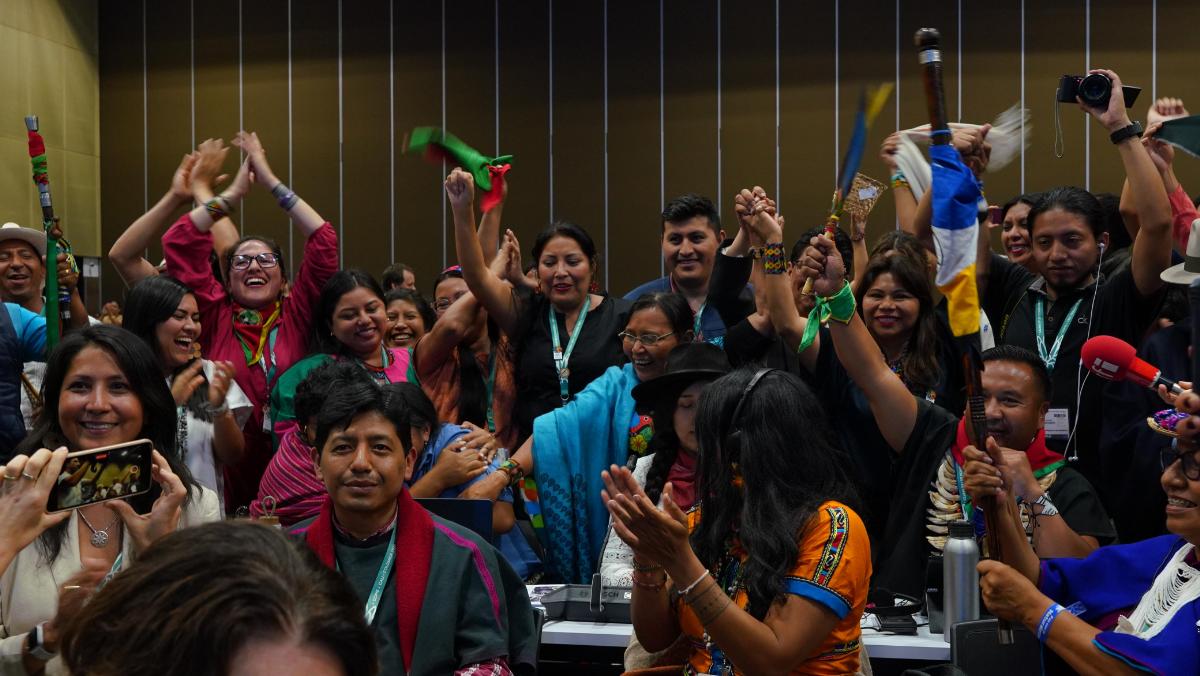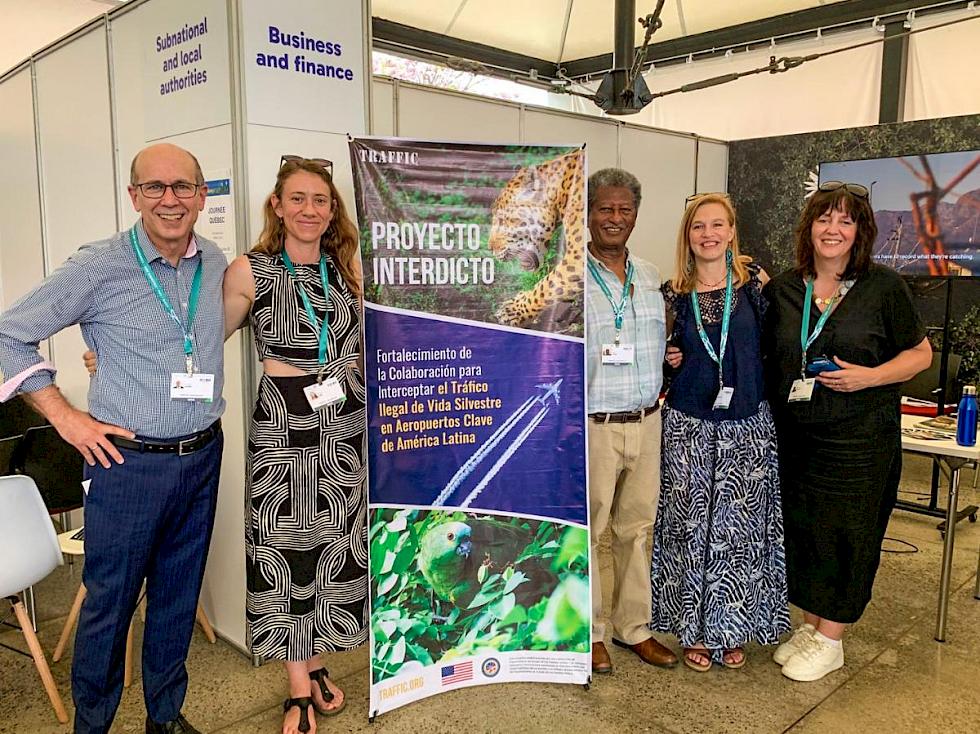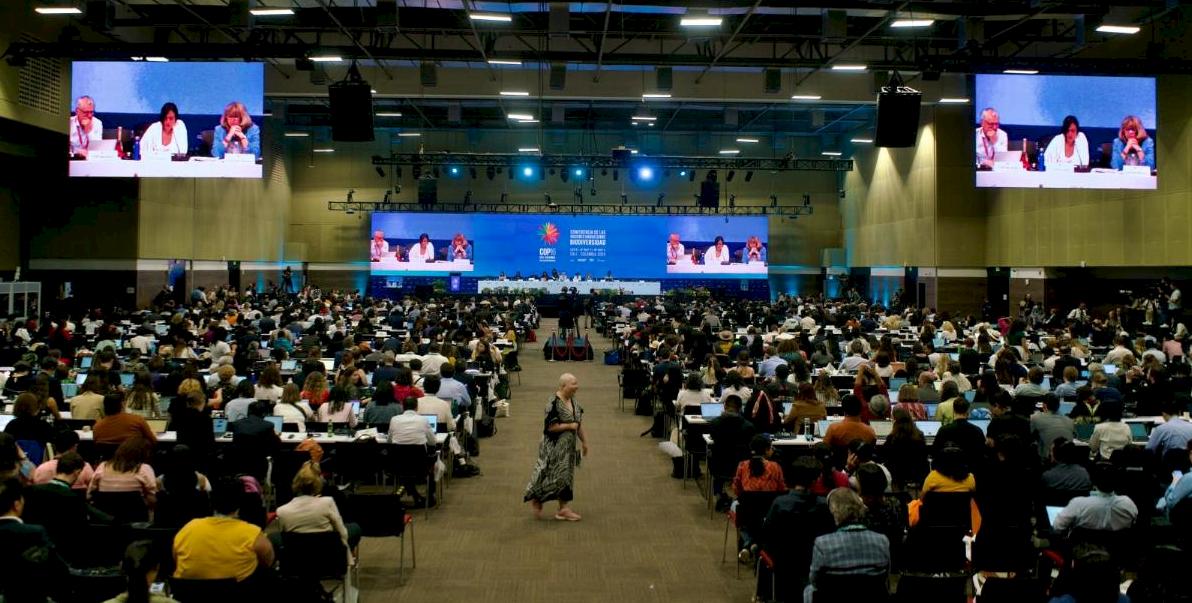Historic wins, important progress, yet critical unfinished business: outcomes of COP16
One of the world’s most important biodiversity events of 2024, the 16th UN Convention on Biological Diversity Conference of the Parties (COP16), has just concluded. And while there were major advancements for biodiversity, some critical decisions were left pending as time ran out.
Hailed as the ‘People’s COP’, over 20,000 delegates representing governments from 196 countries, Indigenous Peoples, local communities, civil society, and the private sector gathered in Cali, hosted by the Government of Colombia, to advance solutions for protecting biodiversity in an interconnected, global effort.
Two landmark decisions at COP16
The conference led to two groundbreaking developments for biodiversity conservation, even as some critical issues, such as financial mobilization and framework indicators, were disappointingly unresolved and deferred.
Indigenous communities gain powerful voice in global biodiversity decision-making
In a milestone agreement, Indigenous Peoples and Local Communities (IPLCs) now have a dedicated official group, or ‘subsidiary body’ to the Convention, giving them a formal, permanent role in decisions made during global biodiversity events like COP16.
This significantly strengthens their voice and participation in conservation efforts and recognizes their indispensable role in nature protection, promoting inclusivity and amplifying the wisdom of local custodians in delivering the Kunming-Montreal Global Biodiversity Framework (KM-GBF).

A fairer deal for nature and communities: new ‘Cali Fund’ will see companies share profits from nature’s genetics
In another historic step forward, COP16 agreed to establish the Cali Fund, a new global fund dedicated to sharing benefits from the use of digital genetic data, known as Digital Sequence Information (DSI). Products that use DSI include things like medicines and cosmetics; for example, pharmaceutical companies might use genetic information from rare plants to develop new medications.
By contributing to the Cali Fund, these companies would help support conservation and give back to the communities that protect these valuable natural resources. While many details are still to be worked through, including how funds will be disbursed, half of the fund should go to IPLCs, including women and youth.
With the establishment of the Cali Fund and a new body within the Convention, COP16 saw a greater inclusion for Indigenous Peoples and Local Communities, setting a new standard for inclusive decision-making. But at a time of unprecedented biodiversity loss, the lack of progress on resource mobilization and a robust monitoring framework significantly undermines the successful implementation of global biodiversity commitments.”
Richard Scobey, Executive Director of TRAFFIC
This approach not only honours biodiversity’s cultural and environmental value but ensures that those most connected to nature benefit directly – a key driver in TRAFFIC’s work to build sustainable, legal and safe trade in wild species, covered in Target 9 of the CBD.
TRAFFIC at COP16

TRAFFIC’s presence at COP16 marked key progress on the interlinkages between biodiversity, health, and sustainable trade, with several notable and important advancements:
First Global Action Plan on biodiversity and health
Recognizing the links between biodiversity and human well-being, the Global Action Plan on Biodiversity and Health was adopted. At the heart of this plan is a One Health approach, which emphasizes the interconnectedness of animal, human and ecosystem health, integrating biodiversity and health agendas to support food security, livelihoods, and medicinal resources.
Whilst voluntary, countries agreed to work this connection into their conservation and health policies, helping to build a healthier, more sustainable future for everyone.
It’s clear that an all-of-society approach is what’s needed to deliver for planet and people. And with less than six years to meet the targets set by the KM-GBF, TRAFFIC is committed to scaling up evidence, solutions, and influence to support conservation actions and build stronger ties between biodiversity and sustainable trade solutions.”
Melanie Heath, Senior Director of global programme office at TRAFFIC
Advances in sustainable wildlife management
Leaders at COP16 also recognised important gaps in how we use wildlife sustainably, emphasizing the critical role of responsible wildlife management in conservation efforts.
Their decision builds on international agreements like the Convention on International Trade in Endangered Species (CITES) and the Convention on Migratory Species (CMS), strengthening global collaboration across multiple sectors to promote sustainable and ethical practices in wildlife trade and protection.
Commitment to national action and measuring progress
COP16 was the deadline for all countries to update their National Biodiversity Strategies and Action Plans (NBSAPs) aligning national targets to the KM-GBF. By the end of the conference, 44 countries had done so and 119 countries aligned their national targets. COP16 underscored the urgency for all countries to submit comprehensive biodiversity plans and accelerate implementation.
These plans are the primary instrument of the CBD at national level, and will guide many actions including on trade in wild species, supporting the global goal of a ‘nature-positive’ future by 2030.
An uncertain ending to COP16
However, despite these victories, COP16 ended ambiguously as it was suspended before negotiations could conclude. As a result, some instrumental decisions were not taken: how to pay for the global plan to halt the destruction of nature (the KM-GBF) and how to measure our success in meeting its 23 targets.

At a time of unprecedented biodiversity loss and climate crisis, and with us yet to meet a single target of our global plan to stop these crises, resolving these issues to achieve the ambitious vision of the KM-GBF has perhaps never been more important.”
Taye Teferi, Acting Senior Regional Director for Africa at TRAFFIC
Explore our contributions to global biodiversity efforts and learn more about our projects here.



